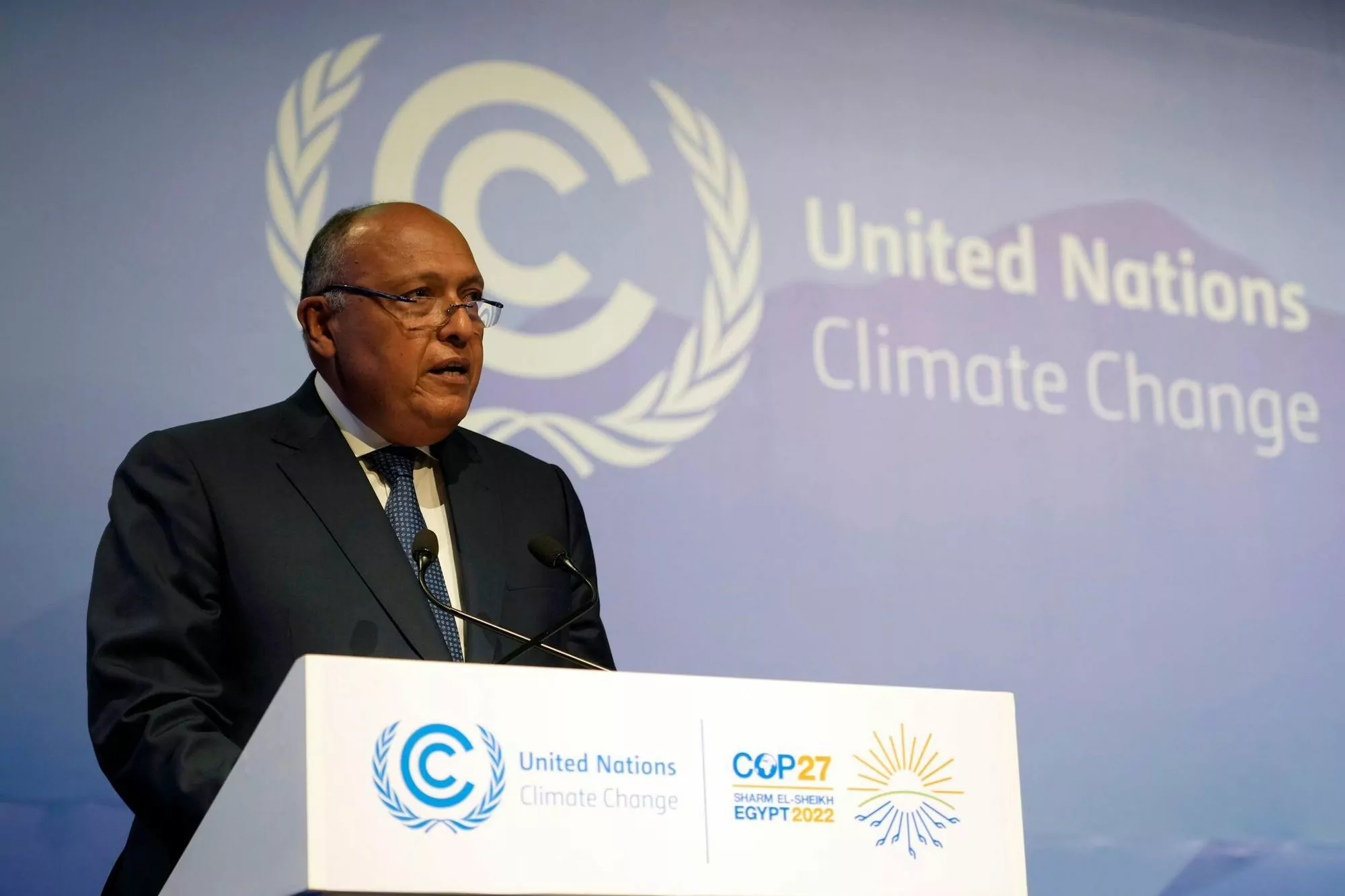The middle Saturday is an important day in the dynamics of a COP. It’s when we get to see if any work has progressed over the previous five days and start to sniff out the dynamics of a deal before ministers arrive.
The cover text offers countries the opportunity to send a strong global political message that communicates shared, far-reaching aims over a decade or more. It often leads to difficult negotiations as it sets out long term economic goals, such as net zero (agreed in 2015) and phasing down fossil fuels (2021). In the context of 2022, some suggest a strong political message from what Egypt says is an “African COP” would be appropriate given the severity of the climate crisis and lack of action.
But questions persist over the intentions and strategy of the Presidency. This is not unusual – it’s often unclear what COP hosts want up to the middle weekend. Often this is a good thing, as they can remain neutral. But in contrast with previous summits, there’s little in the way of vision from Egypt to dig in to (see AP interview here) and, after a miserable first week, some reckon the Egyptians lack the energy to push for an ambitious ‘Sharm Pact’ next week.
GDP hit
Finance, as we know, will be key. $340bn is what’s required on adaptation investments through to 2030 and beyond, says UNEP. Currently we’re at $29bn. That’s a massive issue as extreme weather batters key infrastructure such as ports, roads, airports and hospitals in developing countries. Lack of cash doesn’t wash with Shauna Aminath, Maldives Minister of the Environment: “Ukraine and Covid are examples that when we need the money to flow we can find trillions… it’s a matter of political will and urgency.”
Investment in climate adaptation as a percentage of GDP across Africa is rising – it’s now 3% in South Sudan, 6% in Ethiopia and 9% in Zimbabwe. And the UN’s IPCC climate science panel paints an even grimmer picture. With no improvements to vulnerability or adaptation, and high emissions, sub-Saharan Africa could lose 12% of GDP by 2050 and 80% by 2100. Across most African countries, GDP per capita would be at least 5% lower by 2050 and 10%–20% lower by 2100 at 2C compared to 1.5C.
And then, of course, there is loss and damage. Developed countries are willing to engage, which is a big departure from previous years. The deal, though, is far from done. What such a mechanism would look like and by when it would be up and running are all to be agreed. Differences currently exist on the timeline for a funding mechanism and whether it would be created as a separate facility or within one of the existing structures, such as the Green Climate Fund (GCF). How redressal mechanisms such as the Global Shield insurance initiative will be accounted for within the UNFCCC framework is another unresolved issue.
In all this, the G77 is steadfast in its assertion that it’s united and speaks with one voice, calling for the immediate creation of a separate and specific funding facility for L&D which can be operationalised at the earliest. “What Africa and vulnerable countries need is a clear outcome that includes the provision of finance through a separate facility. We can’t pretend that procedural outcomes will give hope,” says CAN’s Eddie Perez.
Double standards
The US has promised much since its return to the climate table, so all eyes were on President Biden on Friday. “The US is a trustworthy and global leader on climate,” the leader of the world’s top oil and gas producer and consumer told the assembled masses. History, sadly, suggests otherwise. Sleepy but cheery, President Joe Biden’s speech was high on rhetoric, offered more on finance than many hoped, talked up his $370bn domestic climate plan and promised the US would hit its 2030 climate target. Not much on loss & damage, which is the big ticket here.
Still, his pledge to meet $11bn climate finance a year by 2024 ain’t rolling through a red Congress. And a major $2 billion Angola solar project was announced in June. Given the lack of cash, Biden’s biggest climate win post IRA bill may come on Monday, when he meets Xi Jinping in Bali, Indonesia. A White House statement obliquely talked of areas where interests align. Both have suffered billions in extreme weather losses and have vast green energy sectors. Game on?
Alongside a raft of new climate initiatives unveiled by Biden, the US – responsible for 41% of the world’s LNG capacity that’s under development – has teamed up with other fossil fuel exporters to launch yet another non-binding declaration to slash methane emissions. James Browning, Communications Director for Global Energy Monitor called double standards: “The most effective way to reduce harmful methane emissions is to phase out fossil fuels entirely.”





